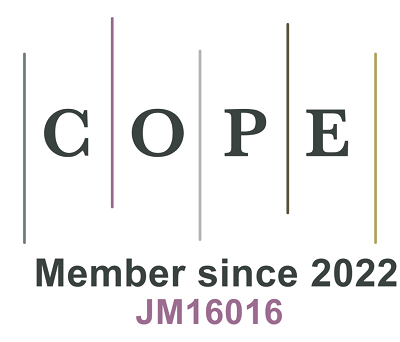REFERENCES
1. Wong RJ, Singal AK. Trends in liver disease etiology among adults awaiting liver transplantation in the United States, 2014-2019. JAMA Netw Open. 2020;3:e1920294.
2. Younossi ZM, Stepanova M, Al Shabeeb R, et al. The changing epidemiology of adult liver transplantation in the United States in 2013-2022: the dominance of metabolic dysfunction-associated steatotic liver disease and alcohol-associated liver disease. Hepatol Commun. 2024;8:e0352.
3. Association for the Study of the Liver (EASL); European Association for the Study of Diabetes (EASD); European Association for the Study of Obesity (EASO). EASL-EASD-EASO clinical practice guidelines on the management of metabolic dysfunction-associated steatotic liver disease (MASLD). J Hepatol. 2024;81:492-542.
4. Ochoa-Allemant P, Serper M, Wang RX, et al. Waitlisting and liver transplantation for MetALD in the United States: an analysis of the UNOS national registry. Hepatology. 2025;81:532-45.
5. Vanlerberghe BTK, van Malenstein H, Sainz-Bariga M, et al. Utility and prognostic value of diagnosing MAFLD in patients undergoing liver transplantation for alcohol-related liver disease. Clin Transplant. 2023;37:e14965.
6. Erard D, Villeret F, Chouik Y, et al. Dual alcohol and metabolic-related liver disease: results from a population of liver transplant patients. Liver Int. 2024;44:422-32.
7. Thoefner LB, Rostved AA, Pommergaard HC, Rasmussen A. Risk factors for metabolic syndrome after liver transplantation: a systematic review and meta-analysis. Transplant Rev. 2018;32:69-77.
8. Paik JM, Golabi P, Younossi Y, Mishra A, Younossi ZM. Changes in the global burden of chronic liver diseases from 2012 to 2017: the growing impact of NAFLD. Hepatology. 2020;72:1605-16.
9. Wong RJ, Aguilar M, Cheung R, et al. Nonalcoholic steatohepatitis is the second leading etiology of liver disease among adults awaiting liver transplantation in the United States. Gastroenterology. 2015;148:547-55.
10. Losurdo G, Castellaneta A, Rendina M, Carparelli S, Leandro G, Di Leo A. Systematic review with meta-analysis: de novo non-alcoholic fatty liver disease in liver-transplanted patients. Aliment Pharmacol Ther. 2018;47:704-14.
11. Jatana S, Krys D, Verhoeff K, et al. Liver allograft cirrhosis, retransplant, and mortality secondary to recurrent disease after transplant for MASH: a systematic review and meta-analysis. Transplantation. 2024;Epub ahead of print.
12. Sourianarayanane A, Arikapudi S, McCullough AJ, Humar A. Nonalcoholic steatohepatitis recurrence and rate of fibrosis progression following liver transplantation. Eur J Gastroenterol Hepatol. 2017;29:481-7.
13. Vallin M, Guillaud O, Boillot O, Hervieu V, Scoazec JY, Dumortier J. Recurrent or de novo nonalcoholic fatty liver disease after liver transplantation: natural history based on liver biopsy analysis. Liver Transpl. 2014;20:1064-71.
14. Lim WH, Ng CH, Tan DJH, et al. Donor diabetes and steatosis affects recipient survival following liver transplantation based on etiology of liver cirrhosis. Transplantation. 2024;108:473-82.
15. Gitto S, Marra F, De Maria N, et al. Nonalcoholic steatohepatitis before and after liver transplant: keeping up with the times. Expert Rev Gastroenterol Hepatol. 2019;13:173-8.
16. Becchetti C, Ferrarese A, Zeni N, et al. A prospective longitudinal assessment of de novo metabolic syndrome after liver transplantation. Clin Transplant. 2022;36:e14532.
17. Charlton M, Levitsky J, Aqel B, et al. International liver transplantation society consensus statement on immunosuppression in liver transplant recipients. Transplantation. 2018;102:727-43.
18. Siddiqui MS, Muthiah M, Satapathy SK, et al. Defining an approach for therapeutic strategies in metabolic dysfunction-associated steatotic liver disease after liver transplantation. Hepatology. 2023;Epub ahead of print.
19. Kim H, Lee KW, Lee K, et al. Effect of PNPLA3 I148M polymorphism on histologically proven non-alcoholic fatty liver disease in liver transplant recipients. Hepatol Res. 2018;48:E162-71.
20. Finkenstedt A, Auer C, Glodny B, et al. Patatin-like phospholipase domain-containing protein 3 rs738409-G in recipients of liver transplants is a risk factor for graft steatosis. Clin Gastroenterol Hepatol. 2013;11:1667-72.
21. Trunečka P, Míková I, Dlouhá D, et al. Donor PNPLA3 rs738409 genotype is a risk factor for graft steatosis. A post-transplant biopsy-based study. Dig Liver Dis. 2018;50:490-5.
22. Villeret F, Dharancy S, Erard D, et al. Liver transplantation for NAFLD cirrhosis: age and recent coronary angioplasty are major determinants of survival. Liver Int. 2022;42:2428-41.
23. Van Herck J, Verbeek J, van Malenstein H, et al. Liver-related and cardiovascular outcome of patients transplanted for nonalcoholic fatty liver disease: a European single-center study. Transplant Proc. 2021;53:1674-81.
24. Kodali S, Kaif M, Tariq R, Singal AK. Alcohol relapse after liver transplantation for alcoholic cirrhosis-impact on liver graft and patient survival: a meta-analysis. Alcohol Alcohol. 2018;53:166-72.
25. Daniel J, Dumortier J, Del Bello A, et al. Integrating an addiction team into the management of patients transplanted for alcohol-associated liver disease reduces the risk of severe relapse. JHEP Rep. 2023;5:100832.
26. Sun K, Ren M, Liu D, Wang C, Yang C, Yan L. Alcohol consumption and risk of metabolic syndrome: a meta-analysis of prospective studies. Clin Nutr. 2014;33:596-602.
27. Germani G, Laryea M, Rubbia-Brandt L, et al. Management of recurrent and de novo NAFLD/NASH after liver transplantation. Transplantation. 2019;103:57-67.
28. Samuel D, De Martin E, Berg T, et al; European Association for the Study of the Liver. EASL clinical practice guidelines on liver transplantation. J Hepatol. 2024;81:1040-86.
29. Ferraioli G, Barr RG, Berzigotti A, et al. WFUMB guidelines/guidance on liver multiparametric ultrasound. part 2: guidance on liver fat quantification. Ultrasound Med Biol. 2024;50:1088-98.
30. Karlas T, Kollmeier J, Böhm S, et al. Noninvasive characterization of graft steatosis after liver transplantation. Scand J Gastroenterol. 2015;50:224-32.
31. Siddiqui MS, Idowu MO, Stromberg K, et al. Diagnostic performance of vibration-controlled transient elastography in liver transplant recipients. Clin Gastroenterol Hepatol. 2021;19:367-74.
32. Chayanupatkul M, Dasani DB, Sogaard K, Schiano TD. The utility of assessing liver allograft fibrosis and steatosis post-liver transplantation using transient elastography with controlled attenuation parameter. Transplant Proc. 2021;53:159-65.
33. Alnimer L, Arellano D, Brombosz E, Noureddin M. Metabolic issues in patients with metabolic dysfunction-associated steatohepatitis (MASH) and their impact on MASH recurrence following liver transplantation: a narrative review. Liver Transpl. 2024;Epub ahead of print.
34. Winters AC, Mittal R, Schiano TD. A review of the use of transient elastography in the assessment of fibrosis and steatosis in the post-liver transplant patient. Clin Transplant. 2019;33:e13700.
35. Siddiqui MS, Bui AT, Syed T, Tseng M, Hassouneh R, Bhati CS; Liver Transplant Biomarker Group. Performance of vibration-controlled transient elastography and clinical prediction models in liver transplant recipients. Clin Gastroenterol Hepatol. 2023;21:1100-2.e2.
36. Mikolasevic I, Hauser G, Mijic M, et al. Assessment of steatosis and fibrosis in liver transplant recipients using controlled attenuation parameter and liver stiffness measurements. Can J Gastroenterol Hepatol. 2021;2021:6657047.
37. Eshraghian A, Nikeghbalian S, Kazemi K, Shamsaeefar A, Geramizadeh B, Malek-Hosseini SA. Non-alcoholic fatty liver disease after liver transplantation in patients with non-alcoholic steatohepatitis and cryptogenic cirrhosis: the impact of pre-transplant graft steatosis. HPB. 2020;22:521-8.
38. Della-Guardia B, Evangelista AS, Felga GE, Marins LV, Salvalaggio PR, Almeida MD. Diagnostic accuracy of transient elastography for detecting liver fibrosis after liver trannsplantation: a specific cut-off value is really needed? Dig Dis Sci. 2017;62:264-72.
39. Eshraghian A, Fattahi MR, Taghavi A, et al. Metabolic syndrome, hepatic fibrosis, and steatosis diagnosed by liver stiffness measurement and controlled attenuation parameter after liver transplantation: the impact on long-term survival. Expert Rev Gastroenterol Hepatol. 2022;16:1003-9.
40. Navin PJ, Olson MC, Knudsen JM, Venkatesh SK. Elastography in the evaluation of liver allograft. Abdom Radiol. 2021;46:96-110.
41. Mikolasevic I, Stojsavljevic S, Blazic F, et al. Noninvasive markers of liver steatosis and fibrosis after liver transplantation - where do we stand? World J Transplant. 2021;11:37-53.
42. Singh S, Venkatesh SK, Keaveny A, et al. Diagnostic accuracy of magnetic resonance elastography in liver transplant recipients: a pooled analysis. Ann Hepatol. 2016;15:363-76.
43. Arab JP, Díaz LA, Rehm J, et al. Metabolic dysfunction and alcohol-related liver disease (MetALD): position statement by an expert panel on alcohol-related liver disease. J Hepatol. 2025;82:744-56.
44. Agudelo M, Yoo C, Nair MP. Alcohol-induced serotonergic modulation: the role of histone deacetylases. Alcohol. 2012;46:635-42.
45. Staufer K, Andresen H, Vettorazzi E, Tobias N, Nashan B, Sterneck M. Urinary ethyl glucuronide as a novel screening tool in patients pre- and post-liver transplantation improves detection of alcohol consumption. Hepatology. 2011;54:1640-9.
46. Allen JP, Wurst FM, Thon N, Litten RZ. Assessing the drinking status of liver transplant patients with alcoholic liver disease. Liver Transpl. 2013;19:369-76.
47. Favrod-Coune T, Lidsky D, Vionnet J, Magini G, Déglon J, Broers B. A false positive hair ethylglucuronide dosage in an alcohol abstinent patient after liver transplantation: a case report. Front Med. 2024;11:1363012.
48. Fleming MF, Smith MJ, Oslakovic E, et al. Phosphatidylethanol detects moderate-to-heavy alcohol use in liver transplant recipients. Alcohol Clin Exp Res. 2017;41:857-62.
49. Viel G, Boscolo-Berto R, Cecchetto G, Fais P, Nalesso A, Ferrara SD. Phosphatidylethanol in blood as a marker of chronic alcohol use: a systematic review and meta-analysis. Int J Mol Sci. 2012;13:14788-812.
50. Lim N, Leventhal TM, Thomson MJ, et al. Protocolized screening and detection of occult alcohol use before and after liver transplant: lessons learned from a quality improvement initiative. Clin Transplant. 2023;37:e15036.
51. De La Torre SA, Ibrahim B, Meneses K, Saab S, Shetty A. Impact of phosphatidylethanol in the surveillance for alcohol use in post-liver transplant population: a retrospective study. Alcohol Clin Exp Res. 2024;48:2404-11.
52. Gustavsson L, Alling C. Formation of phosphatidylethanol in rat brain by phospholipase D. Biochem Biophys Res Commun. 1987;142:958-63.
53. Becchetti C, Dirchwolf M, Banz V, Dufour JF. Medical management of metabolic and cardiovascular complications after liver transplantation. World J Gastroenterol. 2020;26:2138-54.
54. Savino A, Loglio A, Neri F, et al. Metabolic-dysfunction-associated steatotic liver disease (MASLD) after liver transplantation: a narrative review of an emerging issue. J Clin Med. 2024;13:3871.
55. Gabrielli F, Golfieri L, Nascimbeni F, Andreone P, Gitto S. Metabolic disorders in liver transplant recipients: the state of the art. J Clin Med. 2024;13:1014.
56. Lonardo A, Mantovani A, Petta S, Carraro A, Byrne CD, Targher G. Metabolic mechanisms for and treatment of NAFLD or NASH occurring after liver transplantation. Nat Rev Endocrinol. 2022;18:638-50.
57. Prevention Program Research Group. Long-term safety, tolerability, and weight loss associated with metformin in the diabetes prevention program outcomes study. Diabetes Care. 2012;35:731-7.
58. Alnasrallah B, Goh TL, Chan LW, Manley P, Pilmore H. Transplantation and diabetes (Transdiab): a pilot randomised controlled trial of metformin in impaired glucose tolerance after kidney transplantation. BMC Nephrol. 2019;20:147.
59. Choudhury A, Singh SP, Desmukh A, Sahoo B, Eslam M. Post-liver transplant metabolic syndrome. J Clin Exp Hepatol. 2024;14:101368.
60. Becchetti C, Dirchwolf M, Schropp J, et al; Swiss Transplant Cohort Study. Use of statins after liver transplantation is associated with improved survival: results of a nationwide study. Aliment Pharmacol Ther. 2022;56:1194-204.
61. Harrison SA, Bedossa P, Guy CD, et al; MAESTRO-NASH Investigators. A phase 3, randomized, controlled trial of resmetirom in NASH with liver fibrosis. N Engl J Med. 2024;390:497-509.
62. Loomba R, Abdelmalek MF, Armstrong MJ, et al; NN9931-4492 investigators. Semaglutide 2·4 mg once weekly in patients with non-alcoholic steatohepatitis-related cirrhosis: a randomised, placebo-controlled phase 2 trial. Lancet Gastroenterol Hepatol. 2023;8:511-22.
63. Loomba R, Hartman ML, Lawitz EJ, et al; SYNERGY-NASH Investigators. Tirzepatide for metabolic dysfunction-associated steatohepatitis with liver fibrosis. N Engl J Med. 2024;391:299-310.
64. Francque SM, Bedossa P, Ratziu V, et al; NATIVE Study Group. A randomized, controlled trial of the Pan-PPAR agonist lanifibranor in NASH. N Engl J Med. 2021;385:1547-58.
65. Harrison SA, Frias JP, Neff G, et al; HARMONY Study Group. Safety and efficacy of once-weekly efruxifermin versus placebo in non-alcoholic steatohepatitis (HARMONY): a multicentre, randomised, double-blind, placebo-controlled, phase 2b trial. Lancet Gastroenterol Hepatol. 2023;8:1080-93.
66. Loomba R, Sanyal AJ, Kowdley KV, et al. Randomized, Controlled Trial of the FGF21 Analogue Pegozafermin in NASH. N Engl J Med. 2023;389:998-1008.
67. Loomba R, Bedossa P, Grimmer K, et al. Denifanstat for the treatment of metabolic dysfunction-associated steatohepatitis: a multicentre, double-blind, randomised, placebo-controlled, phase 2b trial. Lancet Gastroenterol Hepatol. 2024;9:1090-100.
68. Sanyal AJ, Bedossa P, Fraessdorf M, et al; 1404-0043 Trial Investigators. A phase 2 randomized trial of survodutide in MASH and fibrosis. N Engl J Med. 2024;391:311-9.
69. Winder GS, Shenoy A, Dew MA, DiMartini AF. Alcohol and other substance use after liver transplant. Best Pract Res Clin Gastroenterol. 2020;46-47:101685.
70. Arab JP, Izzy M, Leggio L, Bataller R, Shah VH. Management of alcohol use disorder in patients with cirrhosis in the setting of liver transplantation. Nat Rev Gastroenterol Hepatol. 2022;19:45-59.
71. Sharma P, Shenoy A, Shroff H, et al. Management of alcohol-associated liver disease and alcohol use disorder in liver transplant candidates and recipients: challenges and opportunities. Liver Transpl. 2024;30:848-61.
72. Celik M, Gold MS, Fuehrlein B. A narrative review of current and emerging trends in the treatment of alcohol use disorder. Brain Sci. 2024;14:294.
73. Robinson BL, Ciobanu C, Brown RS Jr, Russo MW. A tale of 2 diseases: ALD and MASLD requirements and monitoring for liver transplantation. Liver Transpl. 2025;31:117-21.
74. Israelsen M, Francque S, Tsochatzis EA, Krag A. Steatotic liver disease. Lancet. 2024;404:1761-78.
75. Chuong V, Farokhnia M, Khom S, et al. The glucagon-like peptide-1 (GLP-1) analogue semaglutide reduces alcohol drinking and modulates central GABA neurotransmission. JCI Insight. 2023;8:e170671.
76. Jensen EL, Israelsen M, Krag A. Transforming steatotic liver disease management: the emerging role of GLP-1 receptor agonists. Hepatol Commun. 2024;8:e0561.
77. Quddos F, Hubshman Z, Tegge A, et al. Semaglutide and Tirzepatide reduce alcohol consumption in individuals with obesity. Sci Rep. 2023;13:20998.
78. Stankevic E, Israelsen M, Juel HB, et al. Binge drinking episode causes acute, specific alterations in systemic and hepatic inflammation-related markers. Liver Int. 2023;43:2680-91.
79. Choi M, Schneeberger M, Fan W, et al. FGF21 counteracts alcohol intoxication by activating the noradrenergic nervous system. Cell Metab. 2023;35:429-37.e5.
80. Carrión JA, Navasa M, Bosch J, Bruguera M, Gilabert R, Forns X. Transient elastography for diagnosis of advanced fibrosis and portal hypertension in patients with hepatitis C recurrence after liver transplantation. Liver Transpl. 2006;12:1791-8.
81. Toniutto P, Fabris C, Bitetto D, et al. Role of AST to platelet ratio index in the detection of liver fibrosis in patients with recurrent hepatitis C after liver transplantation. J Gastroenterol Hepatol. 2007;22:1904-8.
82. Kamphues C, Lotz K, Röcken C, et al. Chances and limitations of non-invasive tests in the assessment of liver fibrosis in liver transplant patients. Clin Transplant. 2010;24:652-9.
83. Rigamonti C, Fraquelli M, Bastiampillai AJ, et al. Transient elastography identifies liver recipients with nonviral graft disease after transplantation: a guide for liver biopsy. Liver Transpl. 2012;18:566-76.
84. Barrault C, Roudot-Thoraval F, Tran Van Nhieu J, et al. Non-invasive assessment of liver graft fibrosis by transient elastography after liver transplantation. Clin Res Hepatol Gastroenterol. 2013;37:347-52.
85. Lutz HH, Schroeter B, Kroy DC, Neumann U, Trautwein C, Tischendorf JJ. Doppler ultrasound and transient elastography in liver transplant patients for noninvasive evaluation of liver fibrosis in comparison with histology: a prospective observational study. Dig Dis Sci. 2015;60:2825-31.
86. Mikołajczyk-Korniak N, Tronina O, Ślubowska K, et al. Dynamic elastography in diagnostics of liver fibrosis in patients after liver transplantation due to cirrhosis in the course of hepatitis C. Transplant Proc. 2016;48:1725-9.
87. Crespo G, Castro-Narro G, García-Juárez I, et al. Usefulness of liver stiffness measurement during acute cellular rejection in liver transplantation. Liver Transpl. 2016;22:298-304.
88. Arshad T, Bhati CS, Bui AT, et al. Evaluation of liver stiffness measurement-based scores in liver transplantation recipients. Liver Transpl. 2023;29:196-205.
89. Piano S, Marchioro L, Gola E, et al. Assessment of alcohol consumption in liver transplant candidates and recipients: the best combination of the tools available. Liver Transpl. 2014;20:815-22.
90. Andresen-Streichert H, Beres Y, Weinmann W, et al. Improved detection of alcohol consumption using the novel marker phosphatidylethanol in the transplant setting: results of a prospective study. Transpl Int. 2017;30:611-20.
91. Burra P, Becchetti C, Germani G. NAFLD and liver transplantation: disease burden, current management and future challenges. JHEP Rep. 2020;2:100192.
92. American Diabetes Association Professional Practice Committee. 9. pharmacologic approaches to glycemic treatment: standards of care in diabetes-2025. Diabetes Care. 2025;48:S181-206.
93. Mach F, Baigent C, Catapano AL, et al; ESC Scientific Document Group. 2019 ESC/EAS guidelines for the management of dyslipidaemias: lipid modification to reduce cardiovascular risk. Eur Heart J. 2020;41:111-88.
94. Agarwal A, Prasad GV. Post-transplant dyslipidemia: mechanisms, diagnosis and management. World J Transplant. 2016;6:125-34.









